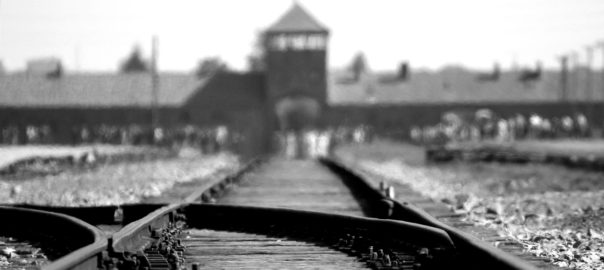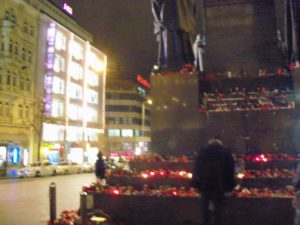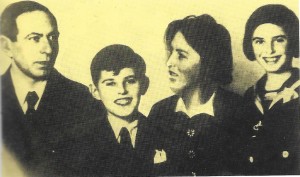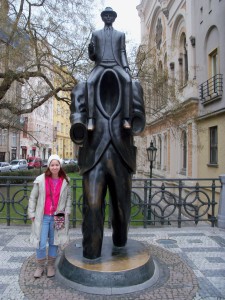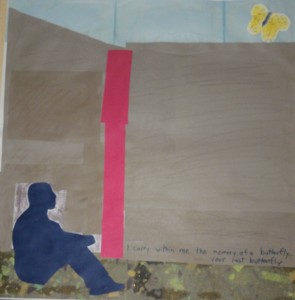Dr. Karel Fleischmann was a man whose talents were multifaceted, and whose humanity and compassion prevailed even in Terezin. He was an accomplished medical doctor, a dermatologist, who also painted in watercolor and wrote literary fiction.
He was born in 1897 in Klatovy, Bohemia, educated in Bohemia, and established his dermatology practice in Ceske Budejovice. He had a creative drive that the practice of medicine could not satisfy, and also painted watercolors, published collections of woodcuts and wrote short stories and poetry. His father was a graphic artist and calligrapher, and was always encouraging of his son’s artistic talents.
In 1939, after the Nazis occupied Czechoslovakia, Dr. Fleischmann was forced to stop practicing medicine. In April 1942, he and his wife were sent to Terezin, where he became one of the remarkable ghetto doctors who struggled to treat patients in spite of overcrowding, little hygiene, malnutrition and lack of both medicines and equipment. Despite their best efforts, it is estimated that around 130 people died each day.
Dr. Fleischmann became one of the directors of health at Terezin, doing all he could to reduce the mortality rate and care for the elderly patients. He was described as outgoing, good-natured and always ready to help others. He used his medical skills to treat patients in Terezin, and some of his patients who survived remembered him making his rounds with a scuffed black bag, and how his gentle sense of humor and compassion comforted them.
While he cared for patients and gave medical lectures at Terezin, the doctor was also secretly documenting the realities of camp life in a series of paintings, portraits, drawings and writings. He was also known for his lectures about medicine and art in the ghetto.
One of his most stark and poignant drawings is known as The First Night of New Arrivals and depicts elderly Jews arriving at Terezin and finding that they had been deceived. These new arrivals had been told that they were being taken to a retirement community in the mountains, and some were even forced to pay the Nazis for their new accommodations. These new prisoners sit on their suitcases, with looks of despair, shocked and horrified at the truth of their situation.
Images of the ever-present hearse are prevalent as well, as they were the only vehicles for transport in Terezin, and had to be used for moving essential supplies as well as sick and dying people.
Dr. Fleischmann also produced stunning, stark portraits of other people in Terezin. He painted his subjects with thick dark, brushstrokes, the lines taking on an almost caricature like quality. The faces of his subjects are especially noteworthy, as he conveys personality and emotion with seemingly simple brushstrokes.
Tragically, the doctor’s medical skills and highly developed artistic talents were not enough to save him. Dr. Fleischmann and his wife were sent to Auschwitz in October 1944 on one of the last transports from Terezin. During the selection at Auschwitz, the SS officer noticed that one of Dr. Fleischmann’s shoulders was slightly misshapen and lower than the other, and decided the doctor was unfit to work. Immediately after their arrival at Auschwitz, Dr. Fleischmann and his wife were sent to the gas chambers.
Dr. Fleischmann’s legacy lives on through his artwork and writings, which were hidden at Terezin and recovered after the war, and in the memories of the Terezin survivors who he treated and comforted against all odds.
Further Reading
The Artists of Terezin by Gerald Green
http://www.yadvashem.org/yv/en/exhibitions/last_portrait/fleischmann.asp
http://art.holocaust-education.net/explore.asp?langid=1&submenu=200&id=13
http://www.yivoencyclopedia.org/article.aspx/Fleischmann_Karel
